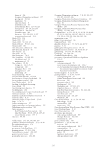8 – Looking after the rivers – a view from nearly 50 000 years of experience 97 relationships, and they connect country and water to the people and maintain our way of being. These stories include the wood duck, the pelican and the famous two-boys story. The rivers were also our trading routes where we met, shared with, and learnt from neighbours. The rivers of the Lake Eyre Basin give us our swimming holes, our fishing holes and our camping places, and they provide a haven for us to go when we need to reflect and reconnect. These waters are the basis for the strong relationships between land, plant, animal and humans over thousands of years. My journey so far – looking after the rivers Of course, throughout my childhood I was intimately connected with the rivers, through my experiences and the stories of my family. Most recently, I became engaged with the governance of the Lake Eyre Basin rivers, through my membership of the Lake Eyre Basin Community Advisory Committee (2009–12) (see Chapter 7). I then spent nearly two years (2010–13) on the Queensland Government’s Wild Rivers Advisory Panel, negotiating an agreement to protect these rivers under Wild Rivers legislation (see Chapters 17, 20 and 21). I worked with passionate and committed people from all walks of life, including government officers, pastoralists, environmentalists and scientists, who are still with us on this journey. It was a privilege to work with them to develop long-term, sustainable and equitable protection for this country and its rivers. All relevant stakeholders on the committee agreed and in good Fig. 8.3. About 70 Aboriginal people attended the Aboriginal Forum in Tibooburra in 2011, where we discussed the future of the rivers of the Lake Eyre Basin, identifying some powerful initiatives to pursue (Tables 8.1 and 8.2, photo, M. Turner).
Downloaded from CSIRO with access from at 216.73.216.187 on Nov 17, 2025, 9:12 AM. (c) CSIRO Publishing

















































































































































































































































































